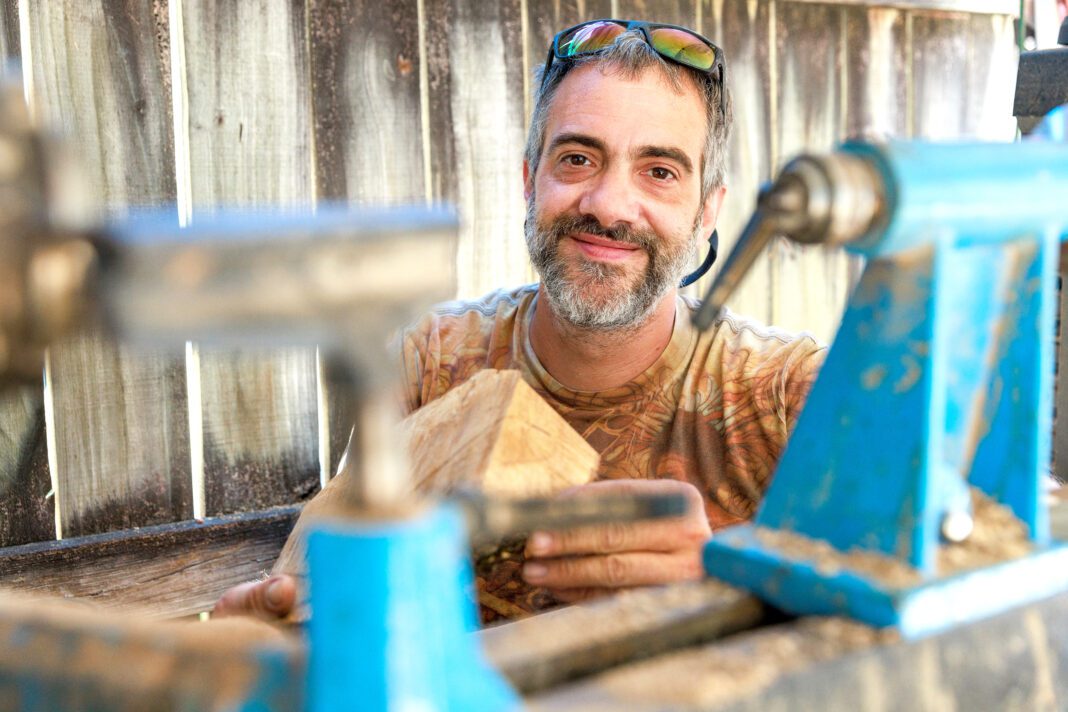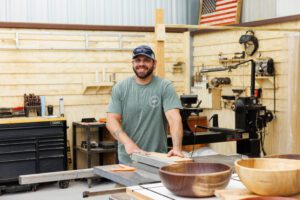The Creatives: Shane Leggio
Shane Leggio
Hometown: Baton Rouge
Age: 40
Artistry: Woodturning, nature photography, landscaping
Online: @sleggi1 on Instagram
When the goal is turning a gnarly water oak burl into a pristine bowl, safety is never guaranteed.
Arm-sized pieces of trees have flown at Shane Leggio’s chest at close range—after the chunks of wood spin off the lathe at more than 1,000 rpms.
“It can be dangerous,” the artist says. “But once you understand the tools, there’s something powerful about getting into a flow state, when time doesn’t matter and it’s all about the work.”
For Leggio, a landscaper by day, that flow state arrives in the late-night hours he spends woodturning vases, trays and fine art sculptures. Now he’s making a series of charcuterie boards for a local restaurant.
Salvaging unwanted scraps from his landscaping jobs, Leggio likes giving discarded wood with darker colors and vibrant swirls of grain a brand-new life.
“Everything,” says Leggio, who studied wildlife conservation at LSU, “is inspired by nature.”

A long-time outdoors photographer, Leggio often explores Grand Isle and Tunica Hills, and takes macroscopic shots of insects.
When the grass grows high, he hunts for clovers along the levee. Thanks to epoxy, those become paperweights, while clutches of lichen and ball moss dance in the sinewy, cosmic swirl of the translucent epoxy orbs of his
own design.
Leggio grew obsessed with woodturning videos during the pandemic, often falling asleep at night while YouTube continued to play them. His father was a furniture craftsman who produced intricate relief carvings, and a few years after his passing, Leggio stood at his first lathe making an urn for his late father’s ashes.
While using traditional high-speed steel cutters, rather than the modern carbide variety, two things are irrevocably important: angles and patience.
The chisel has to be positioned perfectly, but once it is, Leggio can feel it. “Then it’s easy, when it’s trued up, it’s a steady cut all the way around,” he says.
After cutting begins, a typical urn can take 10 hours of turning, 15 hours of carving, and another 6 hours of finishing. And that’s only for the outside.
Sanding and polishing can be painstaking, but they are his favorite parts of the process.
“I’ve learned to push through challenges and take breaks,” Leggio says. “And that’s my best advice for anyone making anything. Just put your hands on something. It doesn’t have to be good at first. Just get your hands on it, and it’ll get better over time.”












